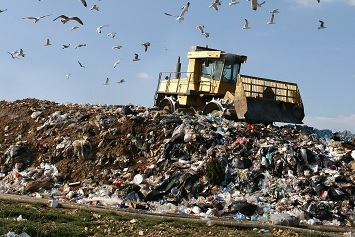The AGs from eight states plus the Pennsylvania Department of Environmental Protection have together filed suit against the EPA for its alleged failure to implement the Obama administration’s 2016 municipal landfill emissions guidelines (August 29, 2016, Federal Register (FR)) according to the timeline mandated by the Clean Air Act (CAA).

The guidelines for existing landfills and the jointly issued New Source Performance Standards (NSPS) were revised mainly to control emissions of methane, the greenhouse gas (GHG) second only to carbon dioxide in contributing to climate change. Under the schedule set in the CAA, the EPA was required to respond to state plans to implement the guidelines by September 30, 2017, and then, by November 30, 2017, impose a federal plan on states that do not have an approved plan. The Agency did neither and instead announced that it decided to reconsider the guidelines/NSPS, a process the Agency said it would complete by March 2020.
The complaint, filed May 31, 2018, asks the U.S. District Court for the Northern District of California to issue a mandatory injunction compelling the EPA to implement and enforce the emissions guidelines without further delay.
2016 Requirements
The petitioners note that the United States produces roughly 265 million tons of solid waste annually, or 4.5 pounds per person, per day—more than any other country per capita. Eighty percent of that waste is disposed of in landfills; the remaining 20 percent is incinerated. The emissions guidelines require all municipal solid waste landfills to submit a design capacity report. Landfills with a design capacity of at least 2.5 million cubic meters of waste by volume must monitor their emissions of nonmethane organic compounds (NMOC) as a proxy for monitoring methane emissions directly. Landfills whose NMOC emissions exceed a certain threshold must install a gas collection and control system.
The EPA estimated that the two rules will reduce methane emissions by approximately 330,000 metric tons—with a global warming potential equivalent to 8.2 million metric tons of carbon dioxide—per year by 2025. That is roughly equivalent to the annual emissions of 1.8 million cars on the road.
Industry Petition
The landfill rules took effect October 28, 2016. One day before, on October 27, 2016, a group of industry petitioners asked the EPA to reconsider the rules. The EPA took no action on the petition at that time. However, on May 5, 2017, new EPA Administrator Scott Pruitt informed the industry petitioners that the Agency intended to grant their petition for reconsideration. On May 31, 2017 (1 day after the May 30 deadline for states to submit compliance plans), Pruitt signed a 90-day stay of the rules.
The EPA later explained that since the stay was issued 1 day after the state-submission deadline, the stay did not alter the obligation of states to submit plans. Nonetheless, according to the current petition, the Agency has not met its nondiscretionary obligation to both review/approve state plans and implement a federal plan. Several states represented by the AGs have submitted plans to the EPA and have inquired when they will receive decisions from the Agency. EPA’s answer seems to have appeared in its Spring 2018 Regulatory Agenda, which states that the Agency will be extending the deadline for submission of state plans until March 13, 2020.
Two Causes of Action
The petition alleges that the EPA violated the CAA in two ways:
First, the Agency failed to meet its nondiscretionary duty pursuant to 40 CFR Section 60.27(b) to respond to state plan submissions within 4 months of the submission deadline—that is, by September 30, 2017. At least two states submitted state plans; the EPA did not respond by the statutory deadline and, to date, has not responded to any state plan.
Second, the EPA failed to meet its nondiscretionary duty pursuant to 40 CFR Section 60.27(d) to promulgate a federal plan for states that did not timely submit state plans within 6 months of the submission deadline—that is, by November 30, 2017. Some states did not submit state plans, but the EPA failed to promulgate a federal plan by the statutory deadline and has not promulgated a federal plan.
The AG petition is here.
